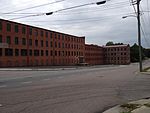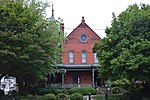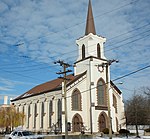Bishop Payne Divinity School
1878 establishments in Virginia1953 disestablishments in VirginiaAfrican-American EpiscopaliansBuildings and structures in Petersburg, VirginiaEducational institutions disestablished in 1953 ... and 8 more
Educational institutions established in 1878Episcopal schools in VirginiaHistorically black Christian universities and collegesIndustrial schoolsSegregated schoolsSeminaries and theological colleges in VirginiaTeacher trainingUse mdy dates from October 2022

Bishop Payne Divinity School was a "racially" segregated Episcopal school for African-American ministerial students, in Petersburg, Virginia. It operated on Perry Street (1878–1886), West Washington Street (1886–1889), and finally South West Street (1889–1949).: 29 The school's Emmanuel Chapel still stands, at the corner of South West and Willcox Streets.
Excerpt from the Wikipedia article Bishop Payne Divinity School (License: CC BY-SA 3.0, Authors, Images).Bishop Payne Divinity School
South West Street, Petersburg
Geographical coordinates (GPS) Address Nearby Places Show on map
Geographical coordinates (GPS)
| Latitude | Longitude |
|---|---|
| N 37.21936599809 ° | E -77.4183788857 ° |
Address
South West Street 401
23803 Petersburg
Virginia, United States
Open on Google Maps










